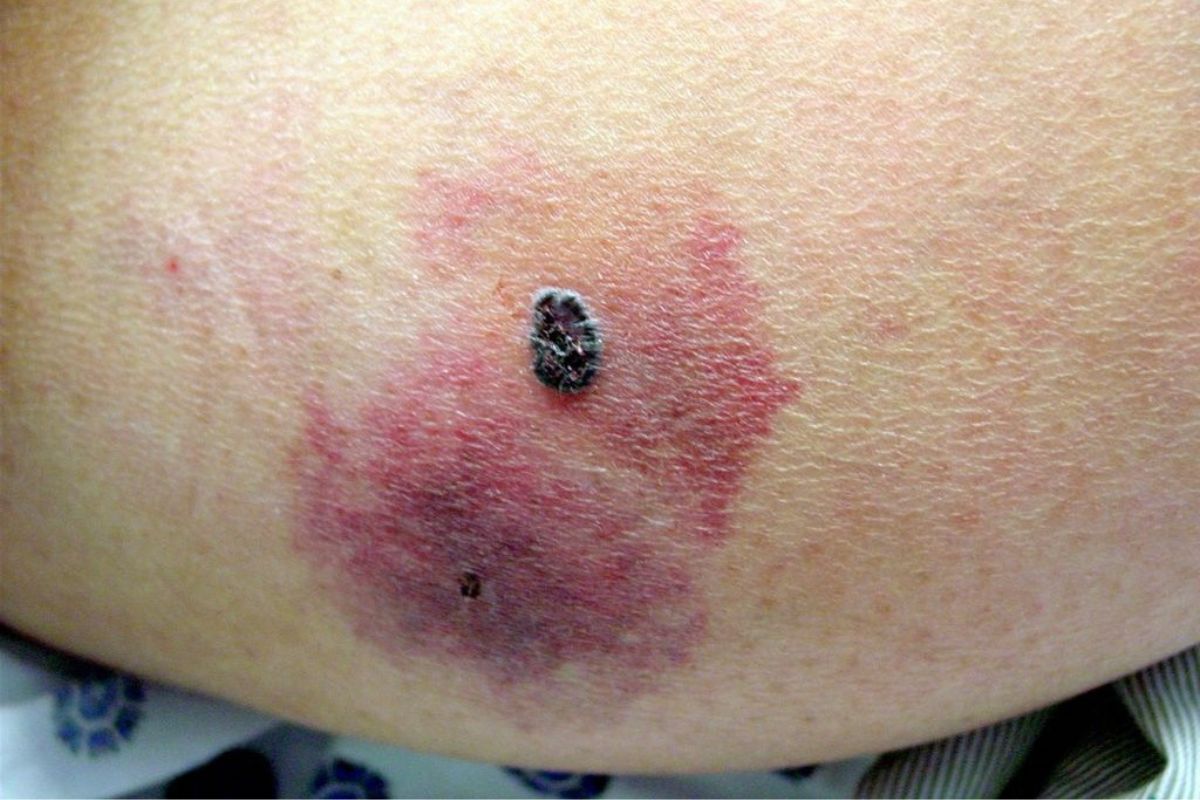
Warfarin necrosis is a rare but serious complication that can arise from taking the anticoagulant medication warfarin. This condition typically occurs within the first few days of starting warfarin therapy and can lead to severe skin and tissue damage. Warfarin necrosis is caused by an imbalance in the blood's clotting factors, leading to small blood clots that block blood vessels and cause tissue death. Symptoms often include painful, red, or purplish skin lesions that can progress to large, blackened areas of necrosis. Early recognition and treatment are crucial to prevent extensive damage and complications. Understanding the risks, symptoms, and management of warfarin necrosis can help patients and healthcare providers take proactive steps to minimize its impact.
Key Takeaways:
- Warfarin necrosis is a rare but serious skin condition caused by the medication warfarin. It can lead to painful lesions and tissue death, but early recognition and proper treatment can improve outcomes.
- Preventing warfarin necrosis involves starting with a low dose, monitoring blood clotting levels, and screening for protein deficiencies. Educating patients about symptoms and seeking prompt treatment are crucial for managing this condition.
What is Warfarin Necrosis?
Warfarin necrosis is a rare but serious complication that can occur when taking the anticoagulant medication warfarin. This condition involves the death of skin and underlying tissues, leading to painful and disfiguring lesions. Understanding the facts about warfarin necrosis can help in recognizing and managing this condition effectively.
Causes and Risk Factors
Knowing what triggers warfarin necrosis can help in preventing it. Here are some key causes and risk factors:
- Warfarin Therapy: Warfarin necrosis typically occurs within the first few days of starting warfarin therapy.
- Protein C or S Deficiency: Individuals with a deficiency in protein C or protein S are at higher risk.
- High Initial Dose: Starting warfarin at a high dose increases the likelihood of developing necrosis.
- Female Gender: Women are more commonly affected by warfarin necrosis than men.
- Obesity: Obesity is a contributing factor, possibly due to increased subcutaneous fat.
- Previous History: A history of warfarin necrosis increases the risk of recurrence.
Symptoms and Diagnosis
Recognizing the symptoms early can lead to prompt treatment and better outcomes. Here are the symptoms and diagnostic methods:
- Painful Skin Lesions: The first sign is usually painful, red skin lesions that appear within 3-10 days of starting warfarin.
- Blisters and Ulcers: These lesions can progress to blisters and ulcers.
- Necrosis: The affected skin and underlying tissues may die, turning black and hard.
- Common Sites: The breasts, thighs, buttocks, and abdomen are commonly affected areas.
- Biopsy: A skin biopsy can confirm the diagnosis by showing necrotic tissue.
- Blood Tests: Blood tests can help identify deficiencies in protein C or S.
Treatment Options
Effective treatment can prevent further complications and promote healing. Here are some treatment strategies:
- Discontinuing Warfarin: Stopping warfarin immediately is crucial.
- Vitamin K: Administering vitamin K can help reverse the effects of warfarin.
- Heparin: Switching to heparin, another anticoagulant, can be beneficial.
- Protein C Concentrate: For those with protein C deficiency, protein C concentrate may be administered.
- Wound Care: Proper wound care is essential to prevent infection and promote healing.
- Surgical Debridement: In severe cases, surgical removal of necrotic tissue may be necessary.
- Hyperbaric Oxygen Therapy: This therapy can enhance wound healing by increasing oxygen supply to the affected tissues.
Prevention Strategies
Preventing warfarin necrosis is better than treating it. Here are some preventive measures:
- Gradual Dose Increase: Starting warfarin at a low dose and gradually increasing it can reduce the risk.
- Monitoring: Regular monitoring of blood clotting levels (INR) is essential.
- Protein C or S Screening: Screening for protein C or S deficiency before starting warfarin can help identify at-risk individuals.
- Alternative Anticoagulants: Considering alternative anticoagulants for high-risk individuals can be a safer option.
- Patient Education: Educating patients about the signs and symptoms of warfarin necrosis can lead to early detection and treatment.
Complications and Prognosis
Understanding the potential complications and prognosis can help in managing expectations and planning treatment:
- Infection: Necrotic tissue is prone to infection, which can complicate treatment.
- Scarring: Healing of necrotic areas often results in significant scarring.
- Amputation: In extreme cases, amputation of affected limbs may be necessary.
- Recurrence: There is a risk of recurrence if warfarin therapy is resumed without proper precautions.
- Mortality: Although rare, severe cases of warfarin necrosis can be fatal.
- Quality of Life: The condition can significantly impact the quality of life due to pain, disfigurement, and the need for ongoing medical care.
Case Studies and Research
Research and case studies provide valuable insights into warfarin necrosis. Here are some notable findings:
- Case Reports: Numerous case reports highlight the importance of early recognition and treatment.
- Clinical Trials: Clinical trials are ongoing to find better treatment options and preventive measures.
- Genetic Studies: Research into genetic factors may help identify individuals at higher risk.
- New Anticoagulants: Studies on new anticoagulants aim to find safer alternatives to warfarin.
- Long-term Outcomes: Research on long-term outcomes helps in understanding the prognosis and improving patient care.
Myths and Misconceptions
Clearing up myths and misconceptions can help in better understanding and managing warfarin necrosis:
- Only Affects the Elderly: Warfarin necrosis can affect individuals of any age, not just the elderly.
- Always Fatal: While serious, warfarin necrosis is not always fatal if treated promptly.
- Occurs Immediately: It usually develops within a few days, not immediately after starting warfarin.
- Only Affects Skin: Although primarily affecting the skin, underlying tissues can also be involved.
- Cannot Be Prevented: With proper precautions and monitoring, the risk of warfarin necrosis can be significantly reduced.
Final Thoughts on Warfarin Necrosis
Warfarin necrosis, though rare, is a serious condition that demands attention. It typically occurs within the first few days of starting warfarin therapy, often affecting areas with high fat content like breasts, thighs, and buttocks. The condition arises due to a temporary imbalance between procoagulant and anticoagulant proteins, leading to clot formation and tissue death.
Early recognition and treatment are crucial. If you notice unusual bruising or skin changes after starting warfarin, contact your healthcare provider immediately. Treatment may involve stopping warfarin, administering vitamin K, and using alternative anticoagulants.
Understanding the risks and symptoms can help manage and prevent complications. Stay informed, communicate with your healthcare team, and monitor any changes closely. Warfarin necrosis is rare but knowing the facts can make a significant difference in outcomes. Stay vigilant and proactive in your health management.
Frequently Asked Questions
Was this page helpful?
Our commitment to delivering trustworthy and engaging content is at the heart of what we do. Each fact on our site is contributed by real users like you, bringing a wealth of diverse insights and information. To ensure the highest standards of accuracy and reliability, our dedicated editors meticulously review each submission. This process guarantees that the facts we share are not only fascinating but also credible. Trust in our commitment to quality and authenticity as you explore and learn with us.


